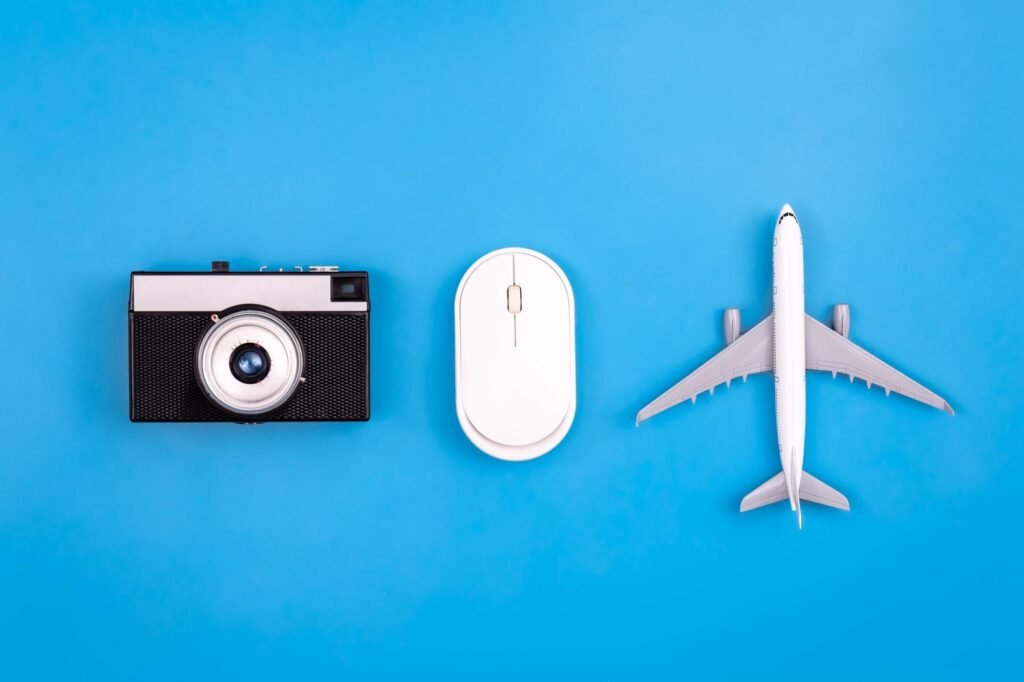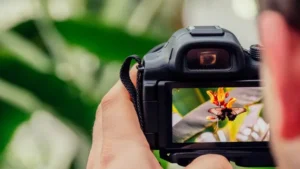Table of Contents
Are you a photography enthusiast planning your next flight and wondering if you can bring your camera onboard? Well, you’re not alone! Many travelers have this question on their mind, and understandably so. After all, cameras are bulky and expensive items that require proper handling and care. Plus, there’s the added concern of airline regulations and security checks.
But, we’ve got good news! In this blog post, we’ll answer the burning question, “Are cameras allowed on flights?” and give you the lowdown on everything you need to know before packing your photography gear for your next adventure. So, sit back, relax and get ready to snap some fantastic shots on your next flight!
TSA Guidelines
If you’re a photography enthusiast, you might be wondering if you can bring your camera with you on a flight. Well, the good news is that cameras are allowed on flights, but there are certain guidelines that you need to follow. According to the Transportation Security Administration (TSA), you can bring your camera as a carry-on or checked baggage.
However, if your camera bag includes spare batteries, place the spare lithium batteries in your carry-on baggage since spare lithium batteries are not allowed in checked baggage. In cases where the camera bag contains film, it’s best to pack it in your carry-on baggage so that it won’t go through the X-ray machine. It is because the X-ray machine can damage the film, and it’s difficult to recover the lost photos.
Remember that airport security checks are often packed with passengers, so make sure that you have ample time to pass through the security checks. In summary, cameras are allowed on flights, but always verify the TSA guidelines to ensure you follow all the rules.
Prohibited Items
The TSA guidelines are in place to ensure the safety of all passengers traveling within the United States. One important aspect of these guidelines is the list of prohibited items passengers are not allowed to bring on board. These items include explosives, flammable materials, firearms, and even certain household items such as bleach and ammonia.
It’s critical that passengers adhere to these guidelines to prevent any dangerous situations from occurring. Additionally, it’s essential to note that the list of prohibited items is subject to change, so passengers should check the TSA website or with their airline for the most up-to-date information before packing. Safety should always be the top priority when traveling, and following the TSA guidelines can help ensure a secure and stress-free journey.
Camera Types Allowed
When it comes to traveling, one of the most important things is knowing what camera types the TSA allows. It can be quite frustrating if you bring a camera with you on your travels, only to be stopped at security and told that you can’t bring it with you. That’s why being aware of the TSA camera guidelines is crucial.
According to TSA, all types of cameras are allowed in both carry-on and checked bags. It includes DSLR, point-and-shoot, mirrorless, and even instant cameras. However, it is important to note that TSA officials may ask you to remove your camera from its case for inspection, so make sure your camera is easily accessible.
Additionally, We recommend that you properly pack and protect your camera gear to prevent any damage during transport. By following these simple guidelines, you’ll have less to worry about during your travels and can focus on capturing memories to last a lifetime.
International Regulations
Are you wondering if you can bring your camera onboard a flight? The answer is yes, you can. However, before you start snapping photos mid-flight, it’s important to know the International Civil Aviation Organization (ICAO) regulations. For safety reasons, passengers cannot use electronic devices during certain flight periods such as takeoff and landing.
Cameras, however, are an exception to this rule because they don’t transmit signals, and you can use them throughout the flight. Remember that certain airlines may have their own regulations regarding the use of cameras onboard. It’s always best to check with the airline before traveling to ensure you have all the necessary information.
So, pack that camera and prepare to capture your next adventure from takeoff to landing!
Airline-specific Policies
Regarding international travel, most countries have their own set of regulations that airlines must adhere to. Each airline has its own specific policies as well, which can make the process of booking and traveling a bit confusing for passengers. Fortunately, most airlines provide information on their websites regarding their policies for international travel.
From baggage allowances to passport requirements, it’s important to familiarize oneself with these policies before boarding a flight. For example, some airlines may require travelers to have a visa or specific vaccination records before being allowed to board a plane. It’s also important to note that policies may vary depending on the destination country, so it’s essential to double-check all requirements for each leg of the journey.
By doing so, passengers can ensure that they have a stress-free journey and avoid any last-minute complications.
Country Regulations
When it comes to international regulations, things can get quite complex. Companies must abide by Different countries’ laws and regulations if they want to do business there. These regulations can cover a wide range of topics, from product safety to environmental standards to labor laws.
These regulations can vary widely, making it difficult for companies to track them all. It’s essential for companies to do their research and understand all the regulations in the countries they operate in. Doing so can help them avoid costly fines and legal issues, as well as build a positive reputation in the markets they’re in.
Navigating international regulations can be challenging, but it’s essential to doing business globally. By staying informed and following the rules, companies can thrive and succeed in any market they choose to enter.
Transporting Lithium Batteries
Transporting lithium batteries can be a tricky process due to international regulations. These regulations aim to ensure the safe transportation of lithium batteries as they pose a safety risk if not handled properly. Airlines and other carriers must adhere to specific rules and regulations, including packaging and labeling requirements.
Understanding and complying with these regulations is essential to avoid any penalties or delays in transportation. When shipping lithium batteries, working with a reputable carrier with experience in transporting hazardous materials is essential, you must also properly label and pack the package to prevent damage or leakage.
By following these rules and regulations, the transportation of lithium batteries can be done safely and efficiently.
Tips for Traveling with Cameras
If you’re a photographer, you know that carrying your camera during travel is a must. But is a camera allowed in flight? The answer is yes. Cameras are allowed on flights, as carry-on and checked baggage. However, it’s important to pack them properly to ensure they don’t get damaged during transit.

Make sure you remove all the batteries and pack them separately to avoid any fire hazards. Tape down the memory card cover and switch your camera off before packing it. You can also carry a small cleaning kit to make sure your camera stays clean and dust-free.
Finally, don’t forget to check with your airline if there are any specific rules or restrictions regarding carrying cameras. These tips will help make your travel with a camera a smooth and hassle-free experience.
Protecting Your Device
As a photographer, traveling with your camera gear can be both exciting and nerve-wracking. On the one hand, you have endless opportunities to capture stunning photographs of new and exotic locations. On the other hand, you run the risk of damaging or losing your expensive camera equipment.
Start investing in a high-quality, sturdy carrying case to protect your device. Make sure it’s waterproof and has enough room for all your gear, including extra lenses and batteries. Keep your camera close to your body when you’re on the move, either slung around your neck or tucked in a secure backpack.
Avoid leaving your gear unattended or in an easily accessible area. Be mindful of your surroundings and keep an eye on your belongings at all times. With these tips, you can focus on capturing memorable moments without worrying about the safety of your camera equipment.
Storing Your Equipment
When traveling with your camera equipment it is important to consider how to store it properly. One of the best tips is to invest in a durable camera bag that provides adequate cushioning and protection. Choose a bag for your camera model, lenses, and accessories.
Additionally, consider using padded dividers to separate your equipment and prevent scratches or dents. If you’re traveling by plane, it’s a good idea to keep your equipment with you as carry-on, rather than checking it in. That way, you can keep an eye on it and ensure that it’s not mishandled during the flight.
Another tip is removing batteries from your equipment before storing or packing it. This will help prevent any damage that may be caused by leaking batteries. Remember, your camera equipment is an investment, so storing and transporting it properly is important to ensure that it lasts for years to come.
Conclusion
In conclusion, while bringing a camera on a flight is generally allowed, it is important to be aware of any restrictions or regulations that may come into play. Remember, just like a camera captures a moment in time, traveling on a plane can also be a memorable experience. So snap away, but always follow airline guidelines to ensure a safe and enjoyable flight!”
FAQs
Can I bring a camera on a flight?
Yes, you can carry cameras on most flights if you keep them in a carry-on bag.
Is there any specific type of camera that is allowed on flights
Generally, cameras are allowed on flights with some exceptions. Some airlines may have specific rules about the size or types of cameras allowed in luggage.
Do I need to have my camera in a protective case while flying?
Having your camera in a protective case is recommended, especially if you plan to check it in with your luggage. This can help prevent any damage from rough handling during the flight.
Can I use my camera during the flight?
You can use your camera during the flight, but following the airline’s rules and guidelines is important. For example, you may need to turn your camera off during takeoff and landing or when they turn the aeroplane seatbelt sign on.





